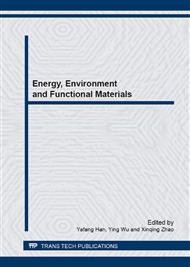p.227
p.232
p.236
p.242
p.247
p.256
p.261
p.267
p.275
A Model of Ferroelectric Field-Effect Transistor after Ionizing Radiation
Abstract:
A theoretical model for radiation effect in a metal-ferroelectric-semiconductor (MFS) field-effect transistor was proposed by considering the fixed charges (Qfx) and interface charges (Qit) induced by ionizing radiation. In this model, the energy band-bending and surface charge in Si at a given gate bias were calculated systematically as a function of fixed charges (Qfx) and interface charges (Qit). The drain-source current (ID) was derived in an exact form without any approximation. All modeling done in this work was generalized to both n and p type Si substrates with an easy sign of the Fermi level potential in the formalism. The derived results demonstrate that the symmetry of polarization versus gate voltage curve of the MFS structure degrades when Qfx and Qit increase, which can explain the imprint behavior successfully. Additionally, the residual polarization in the ferroelectric field-effect transistor decreases with increasing Qfx and Qit, which can account for the polarization reduction. As expected, the calculated transfer characteristic of the ferroelectric FET shows that the subthreshold voltage is significantly affected by Qfx and Qit. This investigation may provide some useful insights for the space applications of ferroelectric FET’s.
Info:
Periodical:
Pages:
247-255
Citation:
Online since:
April 2014
Price:
Сopyright:
© 2014 Trans Tech Publications Ltd. All Rights Reserved
Share:
Citation:


